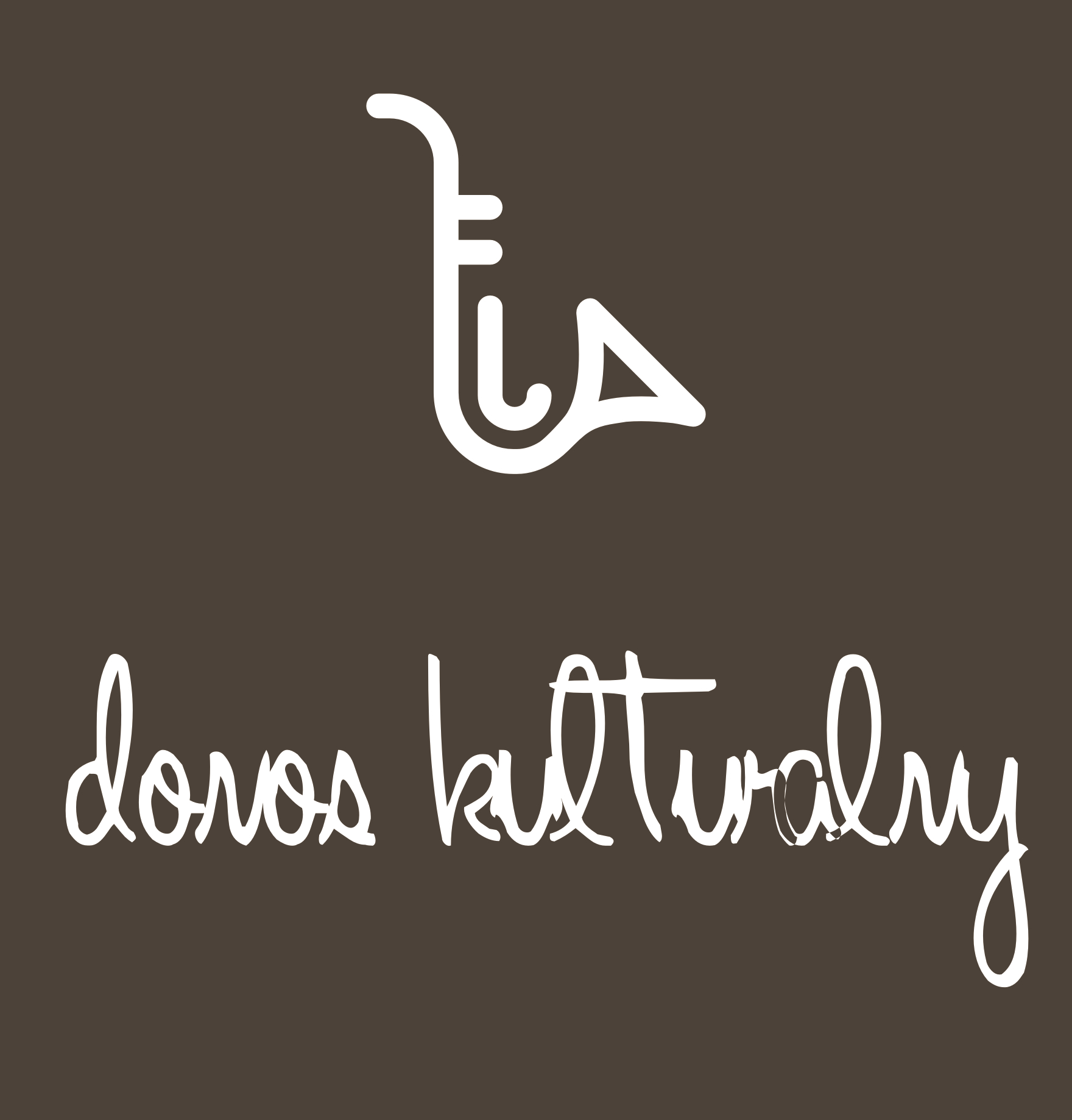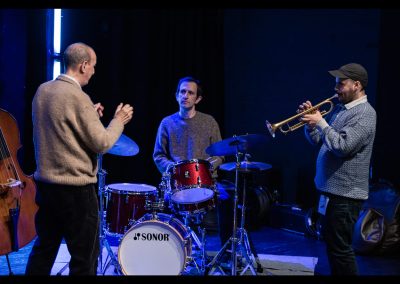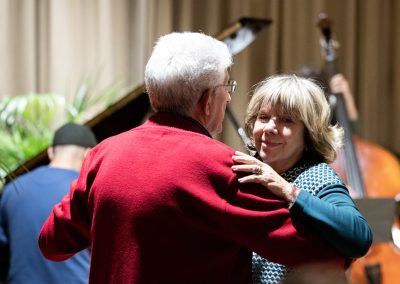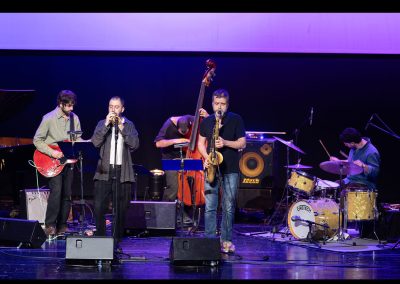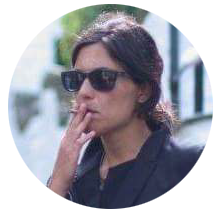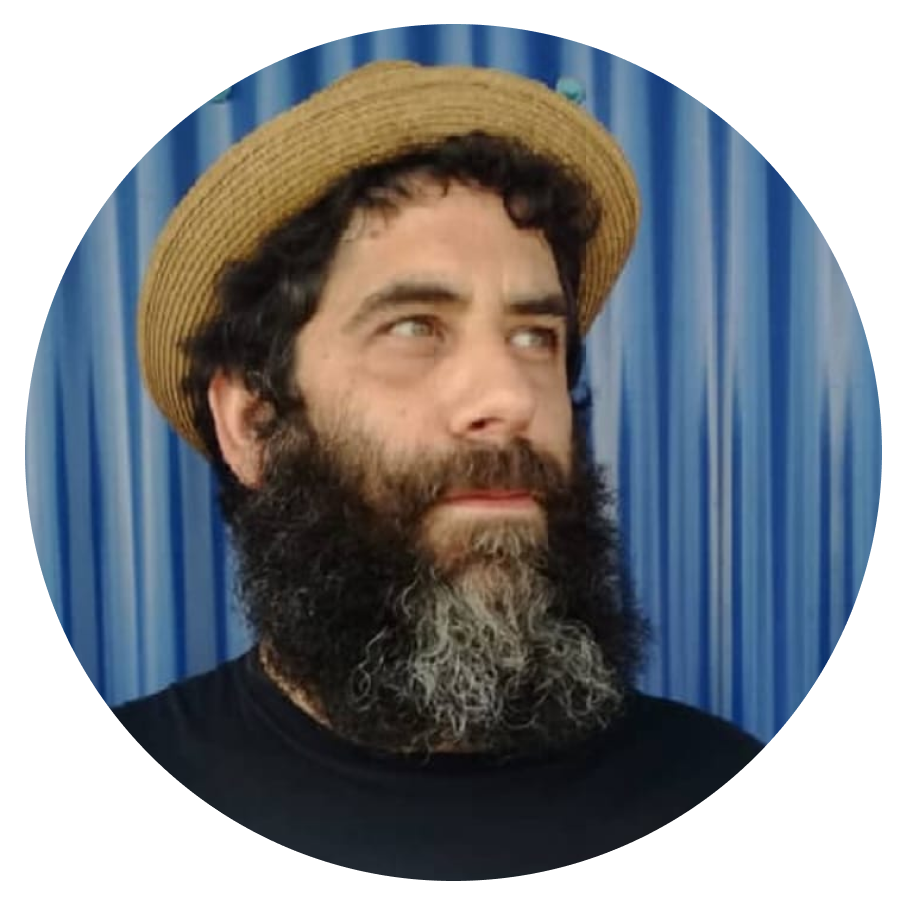
Natalia Kordiak – A Journey Through Music, Improvisation, and Education
.
.
.
NATALIA KORDIAK
A Journey Through Music, Improvisation, and Education


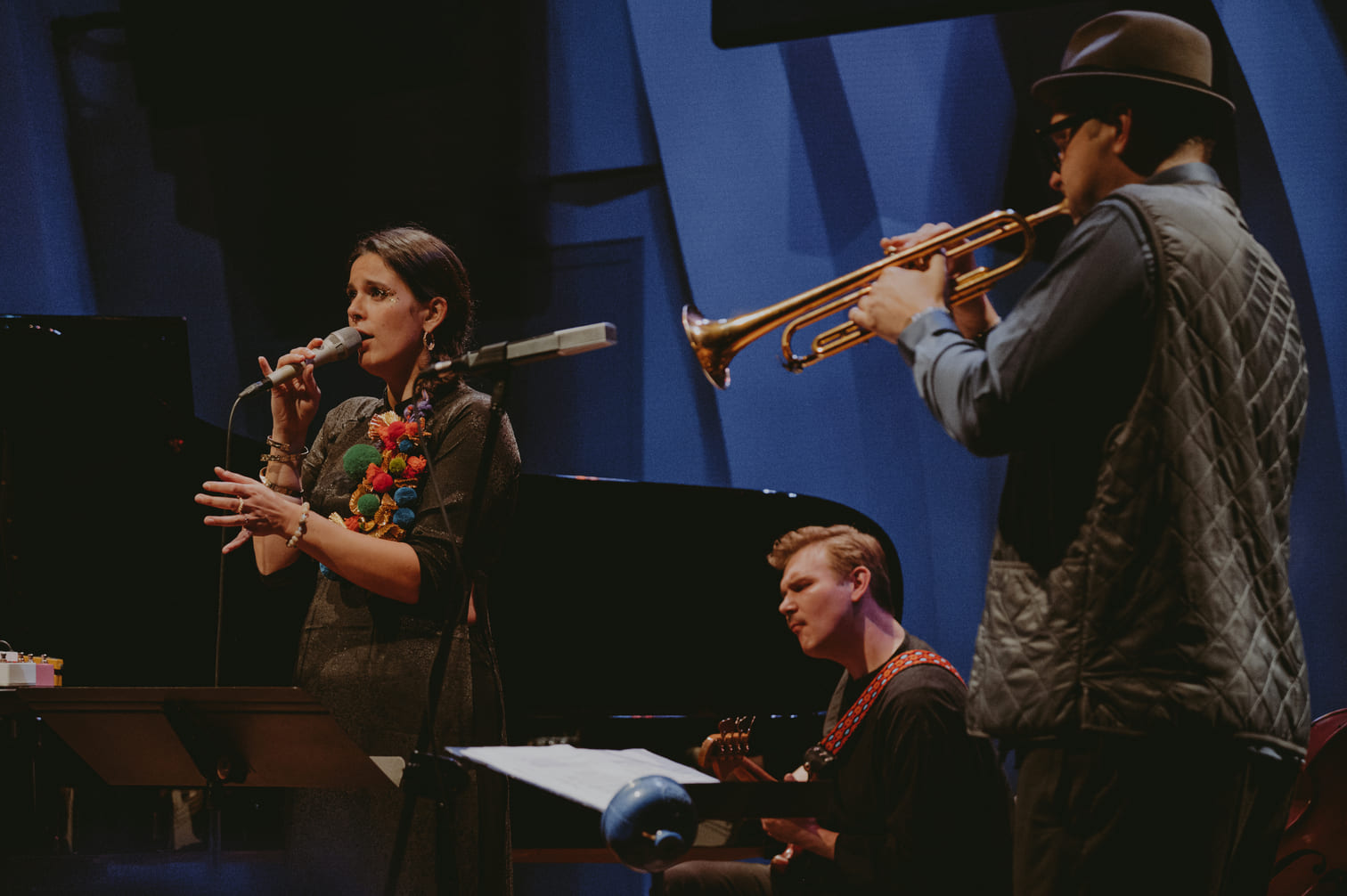
“I’ve always loved to sing. Wherever I went, I’d hum or sing something” recalls Natalia Kordiak about her first encounters with music. Natalia is a vocalist, improviser, educator, and event organiser. Her extensive portfolio is impressive for someone whose career has not yet spanned many years. Curiosity about the world has always been a defining trait for Natalia. Combining her musical interests with sports training, she began her music school education not with singing but with the saxophone. She even explored opera singing for a time.
As a teenager, Natalia attended the Voicingers Festival – an event that combines showcases, competitions, and workshops for vocalists. Voicingers serves as a platform for exchanging ideas, musical inspirations, meeting artists, and establishing long-term relationships. For Natalia Kordiak, it also became the beginning of numerous ventures. She started with workshops and, in 2018, won the Grand Prix at the International Competition for Singing Musicians, which allowed her to record her debut album. “Bajka” (“Fairy Tale“), released by the Slovak label Hevhetia, and received a nomination for Poland’s prestigious music industry award, the Fryderyk. Over time, Natalia began collaborating with Voicingers as a co-organiser, coordinator, and producer of subsequent editions of the event.
Voicingers is also a space for exchanging artistic experiences, exploring teaching methods, and engaging with intriguing creators from around the world. Natalia had the opportunity to work with artists such as Sofia Ribeiro, Andreas Schaerer, Michael Schieffel, Leïla Martial, Grzegorz Karnas (the founder and director of Voicingers), and Anna Gadt (who later became her lecturer at the Academy of Music and now collaborates with Natalia on a musical project). “Their perceptions of music and the world gave me immense inspiration for my creativity, composing original works, and daily vocal practice. It also eventually led me to teaching,” says Natalia.
In 2017, in collaboration with the National Philharmonic in Warsaw, Natalia initiated a series of jazz educational concerts. She organised recurring workshops, taught lessons, and worked with vocalists during festivals, such as Voicingers and the Wesoła Jazz Festival. In recent years, Natalia has spent significant time outside Poland. The Swarnabhoomi Academy of Music in Chennai, India, offered her an artistic residency. During her seven months there, she created an original vocal class and travelled across India conducting workshops for children and youth. After her residency in India, Natalia began working in China and Vietnam, conducting workshops for jazz vocalists. These sessions focused on improvisation, fostering creativity, spontaneous authenticity, and building artistic autonomy. “Teaching also means caring for one’s own development,” she notes, explaining her decision to pursue doctoral studies at the Academy of Music in Łódź. “Teaching singing, music, and improvisation is highly complex. A teacher engages with a sensitive medium influenced not only by skill but also, perhaps primarily, by the emotional sensitivity of the individual. It’s a tremendous responsibility to avoid stifling their autonomy, to ensure that advice doesn’t lead to copying others or what is already known, liked, or easy. Teaching should guide individuals to discover their truth.” She continues: “The voice is an instrument connected to our bodies. It works symbiotically with us, which is why understanding and safety are crucial for freedom of expression. Of course, this all sounds nice in theory. In practice, it’s much harder and requires patience. I’ve met many people who helped me (though some did not). Meaningful encounters always changed me, developed me, and made me reflect, sometimes even questioning my perspective on certain aspects of life.”






The most important ensemble Natalia works with is her quintet, with which she has recorded two albums. The most recent, titled “Ytinamuh” (read it backwards as well), was recorded during Natalia’s diploma concert at the Karol Szymanowski Academy of Music in Katowice. In this paratheatrical performance, music intertwined with meaningful words. Alongside Natalia’s original lyrics, the performance included excerpts from works by notable authors such as Ayn Rand, Olga Tokarczuk, Jolanta Brach-Czaina, and Sylvia Plath. The concert also featured vocal improvisations, enriched with electronic effects. She was joined on stage by Przemysław Chmiel (tenor and soprano saxophone), Mateusz Kołakowski (piano), Alan Wykpisz (double bass, bass guitar), and Grzegorz Pałka (drums). Her attention to words is also evident in another project, TANOK, a duo formed with Ukrainian pianist Kateryna Ziabliuk. Together, they perform a programme featuring the suite “Pieśń Lasu” (“Song of the Forest”), based on the works of Ukrainian poet, writer, translator, and literary critic Lesya Ukrainka. One of Natalia’s latest artistic ventures is the quartet Voice Act. Founded by Anna Gadt, the vocal ensemble includes Marta Grzywacz and Gosia Zagajewska alongside Natalia. The quartet creates vocal narratives rooted in the diverse temperaments, histories, experiences, and styles of its members: folk, classical, jazz, contemporary, and free music. Voice Act has already released an album featuring avant-garde vocal music layered with references and inspirations that accompanied the vocalists during the recording process. The quartet’s performances are a spectacle about the Voice itself, not just with the Voice in the lead role. They perform both purely vocal concerts and collaborations with guest artists. One such collaboration was with renowned drummer Jim Black during the first edition of the Kxntrst Music Festival.
Anna Gadt: “I have known Natalia Kordiak for many years, which allows me to observe her journey from a temporal perspective. Initially captivated by mainstream jazz, she was later drawn to open forms, improvisation, and electronics. Her two original albums provide an intriguing starting point for further exploration of her unique performance language. I believe she is growing increasingly confident on stage as both a leader and a creator of her own artistic vision. We first met during the Voicingers workshops. Natalia stood out with her distinctive personality and genuine, vibrant interest in music. Later, she was my student for several years at the Jazz Department in Katowice. She is highly ambitious and determined. In her artistic pursuits, she appears to focus on combining sincerity, intuition, and awareness, and her drive for growth and her interest in sound exploration are truly impressive.
For these reasons, I invited Natalia to collaborate in Voice Act, a project featuring four vocalists/improvisers without the support of instrumentalists or electronics. Voice Act focuses on the agency of the voice, individual stories, diverse perspectives and roots, as well as the need for human connection, curiosity about others, and the equality of listening and being heard. Beyond her technical abilities and a voice with a beautiful tone and wide range, Natalia brought to Voice Act her creativity, unique sensitivity, and openness to others. Her imagination participates freely in the dialogue between voices, adding an essential and inspiring element. I believe that her greatest discoveries are still ahead of her, and I wholeheartedly wish her the very best in achieving them.”
Mentioned earlier Kxntrst Music Festival leads to another of Natalia Kordiak’s roles – as an organiser of artistic events. She co-creates the Kxntrst Music Festival with two other prominent figures of the younger generation in Polish music: Kuba Więcek and Piotr “Pianohooligan” Orzechowski. The festival’s programme includes concerts, workshops, and panel discussions. “As active and thoughtful people and artists, we should not only focus on our creative work but also on changing the way the music market in Poland is perceived. We need to emphasise authenticity rather than conforming to industry norms and standards,” says Natalia.
What does the future hold for Natalia Kordiak? “I don’t know yet. I don’t like putting pressure on myself,” she admits. Her solo project is developing – for a year now, she has been performing solo concerts, incorporating guitar effects and analogue synthesisers into her creations. In her quintet, she has performed several times with trumpeter Tomasz Dąbrowski (the trumpet replaced saxophones in the ensemble), offering a new perspective on the already polished material. She plans to continue collaborating with other musicians in unique, often one-off improvised performances that bring her immense joy. She also intends to perform as a member of several ensembles. Finally, Natalia will focus on her doctoral studies, exploring the interplay of vocal artistic expression in compositional and improvisational processes.
Travelling will undoubtedly remain a significant part of her plans. “The most beautiful aspect of travelling is observing people – their traditions, lifestyles, perceptions of music, religion, habits, and experiences of art. Exploring the world as broadly as possible, including typical tourism, is a passion of mine. My friends always laugh at how well-prepared I am when it comes to knowing local attractions, history, and cuisine,” she says with a smile.



Este artículo se publica simultáneamente en las siguientes revistas europeas, en el marco de “Groovin’ High”, una operación para destacar a las jóvenes músicas de jazz y blues : Citizen Jazz (Fr), JazzMania (Be), Jazz’halo (Be), Salt Peanuts (DK/SE/NO), Jazz-Fun (DE), In&Out Jazz (ES) y Donos Kulturalny (PL).
This article is co-published simultaneously in the following European magazines, as part of « Groovin’ High » an operation to highlight young jazz and blues female musicians : Citizen Jazz (Fr), JazzMania (Be), Jazz’halo (Be), Salt Peanuts (DK/SE/NO), Jazz-Fun (DE), In&Out Jazz (ES) and Donos Kulturalny (PL).
#Womentothefore #IWD2025

